Scientists at the U.S. Department of Agriculture’s Agricultural Research Service laboratory in Wapato, Washington, conduct research on biology and management of insect pests of tree fruits and potatoes. The tree fruit research group has expertise in plant-insect interactions, insect ecology, insect physiology, biological control, chemical ecology, insect genetics and integrated pest management. Our goal is to provide basic and applied knowledge needed to develop or improve integrated pest management in temperate tree fruits. Our research team has undergone major personnel changes over the past several years: This includes the hiring of Rebecca Schmidt-Jeffris in 2019 and Jacqueline Serrano and William Walker in 2020. In addition to seven research entomologists, the tree fruit research group in Wapato is made up of one postdoctoral scientist (Gabriel Zilnik) and 11 biological science technicians.
Here is an update on USDA research at the Wapato laboratory:
Plant-insect interactions
Rodney Cooper (Rodney.Cooper@usda.gov) conducts research on host plant associations of insect pests of tree fruits and potato. He recently developed a method using the plant DNA found within insect guts to identify plants they had previously fed upon. Along with collaborators from Washington State University and USDA researchers from Kearneysville, West Virginia, he adapted this method to identify the dietary history of leafhopper vectors of X disease and spotted lanternfly. The group is now using gut content analysis to identify where leafhoppers pick up the X disease pathogen and to identify the noncrop hosts of spotted lanternfly. This information will help them develop areawide pest management tools, including models to predict the risk of pest invasion during any given year.
Insect ecology
David Horton (David.Horton@usda.gov) has spent his 30-year research career conducting studies on pear psylla dispersal, wintering behavior, reproductive behavior and biological control. His current work includes a collaborative research project with Dowen Jocson, David Crowder and Betsy Beers at WSU to determine whether the acoustic signals emitted by females to attract males for mating can be synthesized and then sent at saturation levels through orchards to confuse searching males (“acoustic mating disruption”). We have progressed in this research to the field-testing phase of the science.
Horton also conducts research on the role of native, nonpest psyllids as sources of parasites that attack pear psylla. He is particularly interested in discovering alternative psyllid hosts of the important pear psylla parasite Trechnites insidiosus. This research has led to the discovery that certain willow psyllid species related to pear psylla also host this parasite in the Pacific Northwest. These willow psyllids can be maintenance hosts for Trechnites when pear psylla is not immediately available or if insecticides temporarily drive the parasite out of orchards.
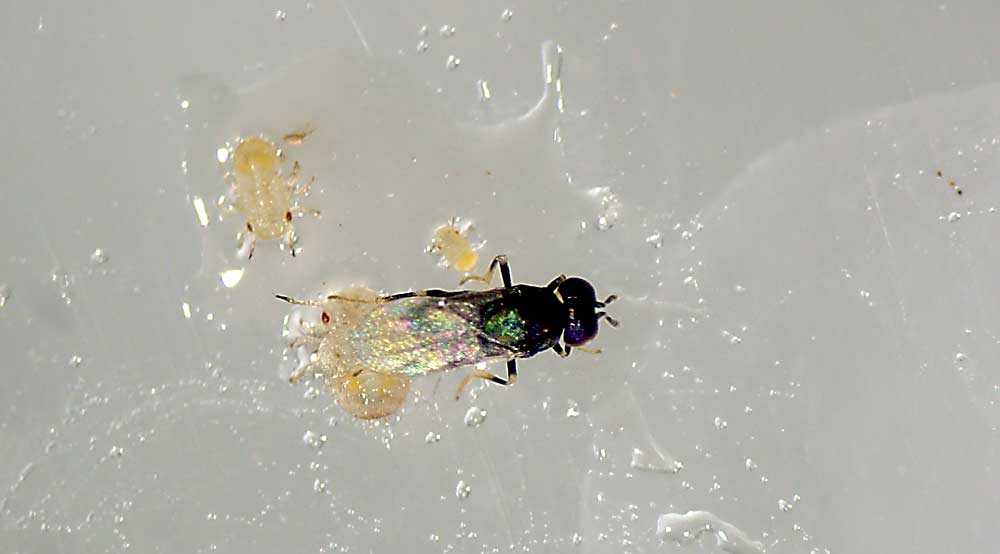
Insect physiology
Lisa Neven (Lisa.Neven@usda.gov) studies how invasive pests establish and spread in new areas under current and future climate scenarios. Using specialized thermal analysis equipment, she recently defined the optimal temperatures for growth and development of codling moth, apple maggot, cherry fruit fly, brown marmorated stink bug and other invasive insect pests of tree fruit. She also identified temperatures that are lethal to many of these pests. This information provides inputs for computer-generated models to delineate regions that are vulnerable to invasion by the pests.
Along with collaborators from WSU, she developed a model called “enmRoute” that will help growers, Washington State Department of Agriculture (WSDA), and USDA Animal and Plant Health Inspection Service to design effective pest monitoring networks. Available at: losorio.shinyapps.io/enmroute, this model will save growers and government organizations money and time by designing highly optimal trapping locations and trap routes that reduce worker hours and travel time.
Biological control
Rebecca Schmidt-Jeffris (Rebecca.Schmidt@usda.gov) has worked in tree fruit entomology for eight years and has been a research scientist with USDA for three years. Her research focuses on biological control of orchard pests by predators and parasitoids.
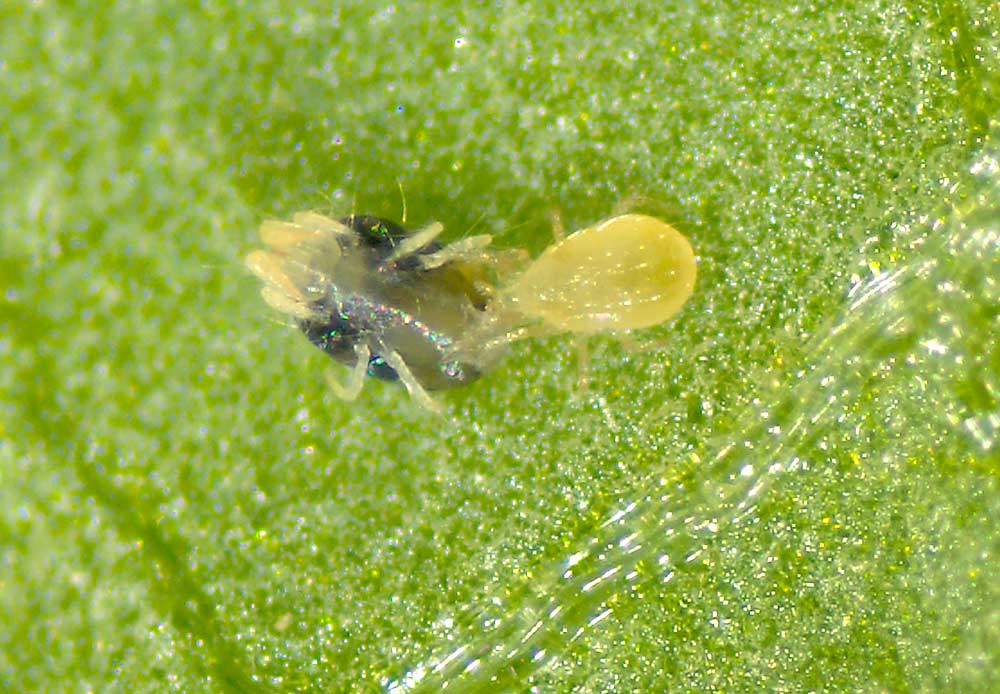
One goal of her research is to improve conservation of natural enemies through selective pesticide programs, landscape manipulation and supplementary food products, with a focus on predatory mites, generalist predators and Trechnites parasitoids of pear psylla. She and her team have recently identified herbicides that are harmful to natural enemies that reside on orchard floors. This information will help growers conserve key orchard predators by selective use of herbicide chemistries.
Another goal of her research is to develop best practice guidelines for purchasing and releasing commercially available natural enemies such as mealybug destroyers and lacewings. Guidelines for releases include timing, release rates and use of aerial drones. Recent research on augmentative releases showed that releases of lacewings can reduce populations of woolly apple aphid by 50 percent.
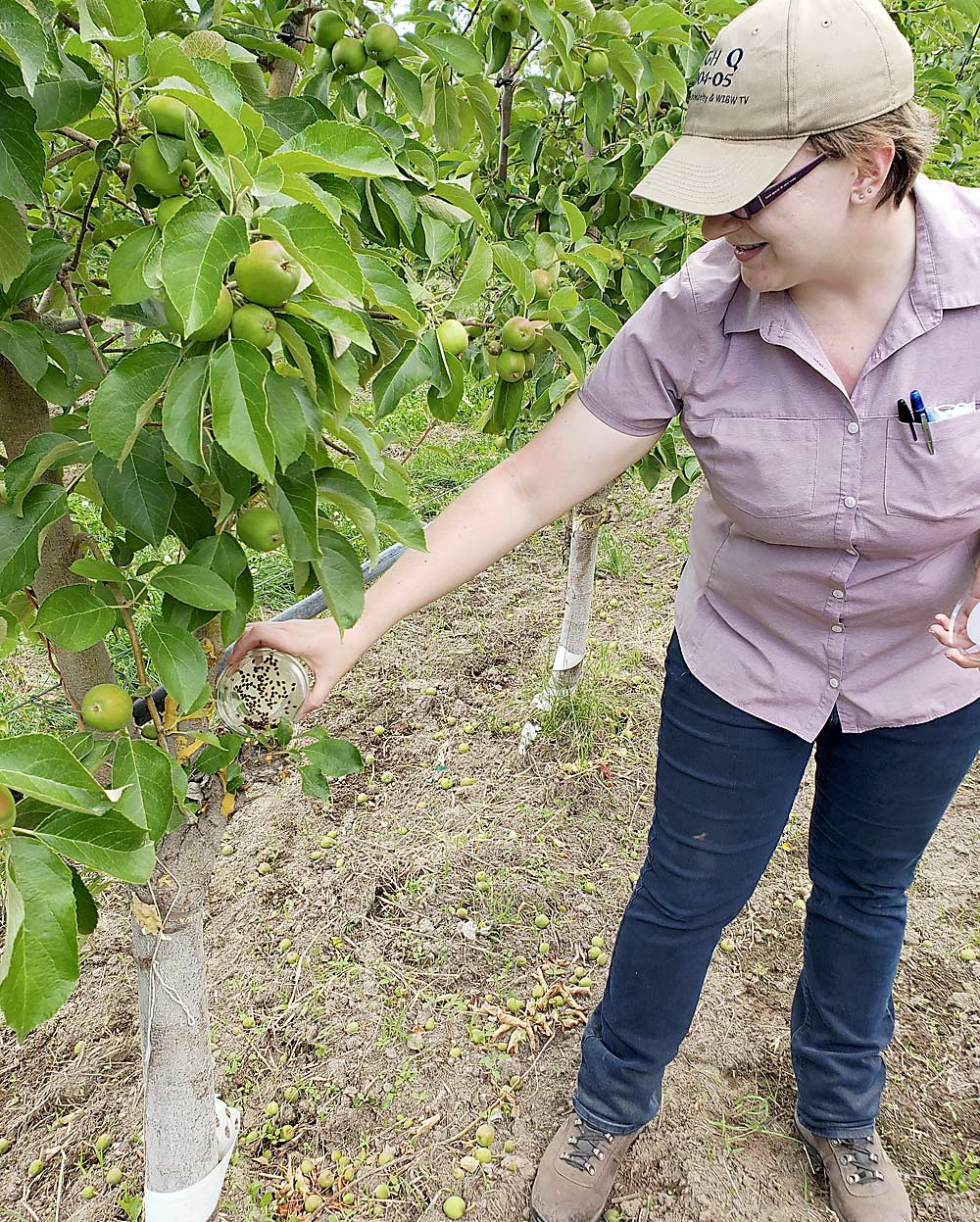
Insect chemical ecology
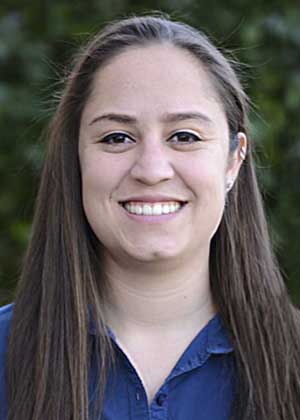
Jacqueline “Jackie” Serrano (Jacqueline.Serrano@usda.gov) joined the research unit as a postdoctoral associate in 2019 and was hired as a research entomologist in 2020. She conducts research on the chemical ecology of insects, with the goal of developing or improving lures and traps for monitoring and trapping insect pests of tree fruits. She is currently examining whether overwintered pear psylla use volatiles from pear trees to locate pear orchards in early spring. This work could lead to development of attractive lures to either monitor reentry of pear psylla into orchards or to disrupt this key behavior.
Serrano is also working with the WSDA to develop lures and traps for the invasive Asian giant hornet, which poses a major threat to tree fruit pollinators. One of her lures helped WSDA locate and eradicate Asian giant hornet nests in summer of 2021. Beginning in 2022, she will work with WSDA to optimize brown marmorated stink bug trap captures, using attractive lures to help them better monitor the establishment and spread of this invasive species in the Pacific Northwest. Serrano also plans to investigate interactions among cherry trees, the X disease pathogen and leafhopper vectors to determine if or how the pathogen alters cherry physiology and vector behavior.
Insect genetics
William B. Walker (William.Walker@usda.gov) has been a longtime collaborator of our research team and joined the unit as a research geneticist in 2020. He conducts research to better understand the molecular and genetic pathways for how the codling moth uses its sense of smell to survive. Insects’ sense of smell is critical for detecting environmental odorants and influencing important behaviors such as finding mates, food and plant hosts to lay eggs.
Walker and collaborators at the Swedish University of Agricultural Sciences and Baylor University have identified previously unknown apple odorants that activate the codling moth’s sense of smell. They are now working to determine how these odorants can be incorporated into odorant-based control strategies for codling moth. The Walker lab is also using CRISPR-Cas9 gene editing methodology to better understand which genes and proteins are critical for codling moth behavior and survival.
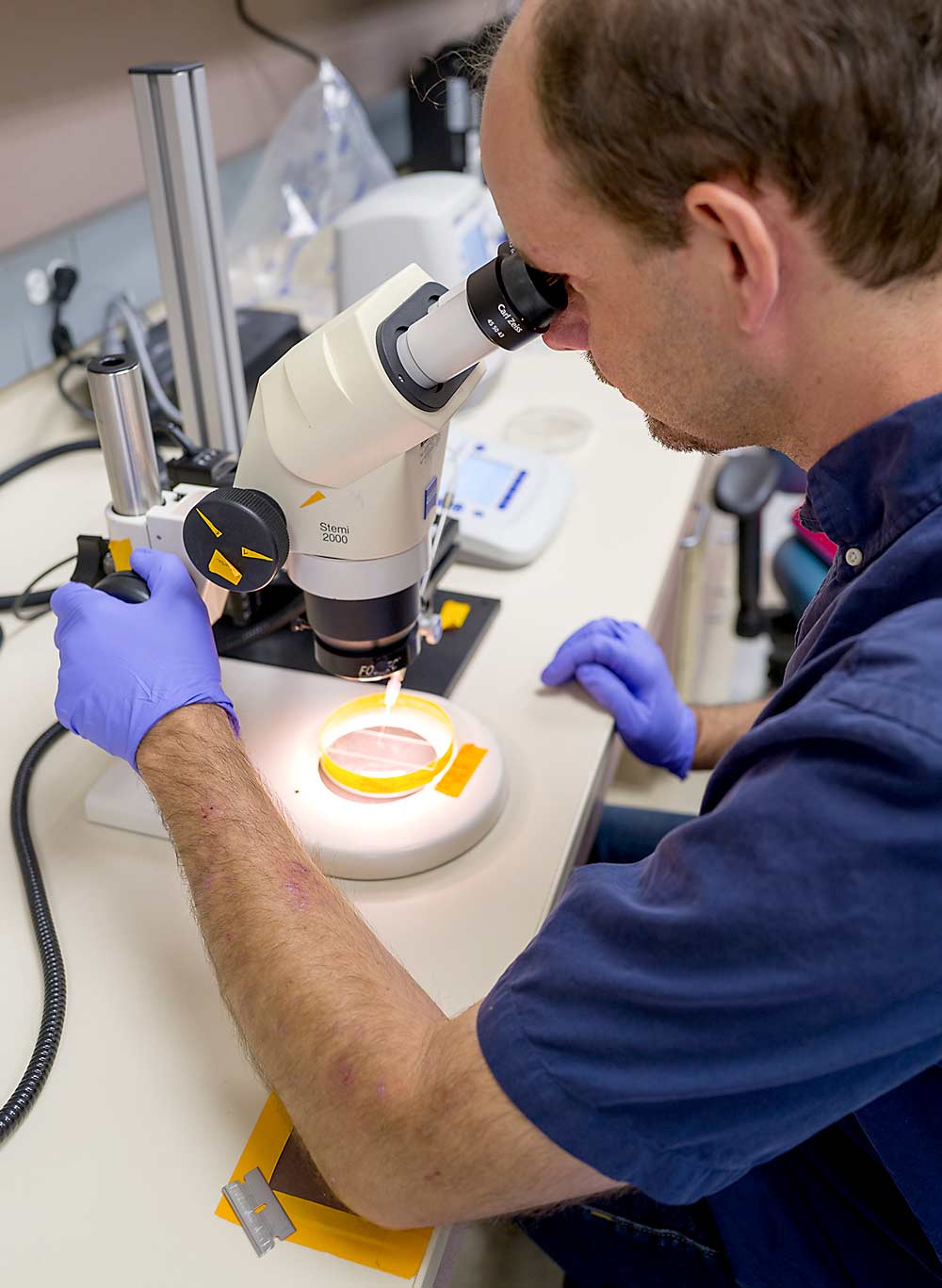
In a separate line of research, Walker is investigating genetic interactions between the X disease pathogen and the leafhopper insects that transmit this pathogen in stone fruit orchards. Knowledge of these interactions will be used to develop or adapt novel gene-based control strategies to protect fruit trees from the devastating effects of X disease.
Management of temperate fruit flies
Wee Yee (Wee.Yee@usda.gov) conducts research on the ecology, behavior and management of western cherry fruit fly and apple maggot fly. With his collaborators, he also researches the genetics and potential biocontrol agents of fruit flies. He has recently discovered that food-grade organic barriers used to protect cherries from rain-induced cracking also protect cherries against attack by cherry fruit flies, potentially providing a new and effective tool in fly management. He has also recently optimized mixtures of organic insecticides and sugar feeding-stimulants as a trap-and-kill approach to controlling cherry fruit fly.
Work on apple maggot flies includes studies on identifying host plant specialization by new fly populations near commercial orchards, host fruit preference by flies, natural enemy complexes and improvement of monitoring traps. Yee recently developed heat treatments to kill apple maggot puparia in yard waste, thus allowing yard waste to be safely moved from apple maggot quarantine areas of Washington to commercial composting facilities in apple maggot-free areas of Washington.
—by Rodney W. Cooper, David R. Horton, Lisa Neven, Rebecca Schmidt-Jeffris, Jacqueline Serrano, William Walker and Wee Yee






Leave A Comment